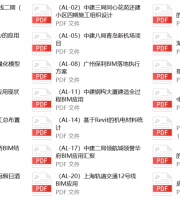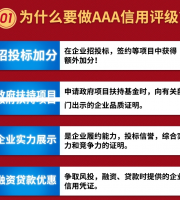Risk prevention Remove hidden dangers Construction scheme of accident prevention technology + service + insurance electrical fire monitoring system 1、 General construction regulations 1
.
Before the construction of the electrical fire monitoring system, the drawings and technical documents approved by relevant departments or institutions shall be available, and the construction shall be carried out according to the drawings, which shall not be changed at will
.
2
.
When the electrical fire monitoring system is completed, the construction unit shall submit the following documents: 1) as built drawing; 2) Written records of design changes; 3) Construction records (including records of concealed works); 4) Inspection records; 5) Completion report
.
2、 Construction wiring 1
.
Wiring of electrical fire monitoring system
.
It should meet the requirements of the current national standard “code for acceptance of construction quality of electrical installations in buildings” (GB 50303), and the type and voltage grade of conductors should meet the requirements of the current national standard “code for design of automatic fire alarm system” (cb50116)
.
2
.
Threading in pipes or trunking shall be carried out after the completion of building plastering and ground works
.
Before threading, the water and sundries in the pipe or trunking shall be removed
.
3
.
Kinks; The joints of wires shall be welded in the junction box or connected with terminals
.
4
.
The pipe orifice and pipe joint of the pipeline laid in dusty or humid places shall be sealed
.
5
.
When the pipe length exceeds the following length, the junction box shall be installed at the place convenient for wiring: 1) when the pipe length exceeds 45m without bending; 2) When the length of the pipe exceeds 30m, there is one bend; 3) When the length of the pipe exceeds 20m, there are two bends; 4) When there are three bends for every 12m pipe length
.
6
.
When the pipe is put into the box, the lock nut shall be set on the outside of the box and the guard mouth shall be set on the inside
.
When the pipe is laid in the ceiling, the lock nut shall be set on the inside and outside of the box
.
7
.
When laying all kinds of pipelines and trunking in the ceiling, it is better to use separate fixtures for hoisting or support fixation
.
The diameter of suspender for hoisting trunking shall not be less than 6 mm
.
8
.
Lifting points or fulcrums shall be set at intervals of 1.0 m to 1.5 m in the straight section of the trunking, and they shall also be set at the following parts: 1) at the joint of the trunking; 2) 0.2m away from the junction box; 3) At the change of trunking direction or corner
.
9
.
Where the pipeline passes through the deformation joints of buildings (including settlement joints, expansion joints, seismic joints, etc.), compensation measures shall be taken, and both sides of the conductor crossing the deformation joints shall be fixed with appropriate allowance
.
10
.
After the laying of wires in electrical fire monitoring system, the insulation resistance of wires in each circuit shall be measured with a 500V megger, and the insulation resistance to ground shall not be less than 20m Ω。 3、 The installation of electrical fire monitoring system should meet the requirements of relevant national standards
.
2
.
The installation of electrical fire monitoring system must be carried out by professional personnel
.
3
.
Power supply mode, power supply voltage, system grounding mode and monitoring mode shall be fully considered in detector installation
.
4
.
The owner of building property rights shall establish and keep the installation and test records of each detector in the system
.
5
.
The safe distance between the detector and bare charged conductor shall be ensured, and the detector with metal shell shall be grounded safely
.
6
.
It is forbidden to install the detector without cutting off the power supply
.
7
.
The connecting wire of the output circuit of the detector shall be twisted pair copper core wire with a cross-sectional area of not less than 1.0mm2
.
8
.
The installation of the detector should not damage the integrity of the monitored line, and should not increase the line contact
.
4、 Installation of electrical fire monitoring equipment: 1
.
When the electrical fire monitoring equipment is installed on the wall, the height from the bottom edge to the ground (floor) should be 1.3m ~ 1.5m, the distance from the side near the door shaft to the wall should not be less than 0.5m, and the front operation distance should not be less than 1.2m; When it is installed on the ground, the bottom edge should be 0.1M ~ 0.2m higher than the floor
.
2
.
The electrical fire monitoring equipment shall be installed firmly without tilting
.
When it is installed on light wall, reinforcement measures should be taken
.
3
.
The cable or wire leading into the electrical fire monitoring equipment should meet the following requirements: 1) the wiring should be neat, avoid crossing, and be fixed firmly; 2) The cable core and the end of the conductor shall be marked with the number, which shall be consistent with the drawing, and the writing shall be clear and not easy to fade; 3) Each terminal of terminal board (or row) shall have no more than 2 wires; 4) A margin of less than 200 mm shall be reserved for cable core and conductor; 5) The conductor shall be bundled; 6) After the lead-in wire passes through the pipe, it shall be blocked at the inlet pipe
.
4
.
It is forbidden to use power plug for main power lead-in line of electrical fire monitoring equipment; The main power supply shall be clearly marked
.
5
.
The grounding (PE) line of electrical fire monitoring equipment shall be firm and marked clearly
.
6
.
The terminals with different voltage levels, different current categories and different functions inside the electrical fire monitoring equipment shall be separated and clearly marked
.
5、 Installation of residual current electrical fire monitoring detector 1
.
Before installation of residual current electrical fire monitoring detector, the inherent leakage current of its monitoring circuit should be measured
.
2
.
The residual current electrical fire monitoring detector should be correctly connected according to Appendix B in different system grounding forms
.
3
.
The n-wire at the load side of the residual current electrical fire monitoring detector (i.e
.
the working zero line passing through the detector) can only be used as the neutral line of the power supply, and can not be shared with other circuits, and can not be repeatedly grounded (i.e
.
can not be connected with PE line); It is necessary to distinguish n-wire and PE wire strictly
.
The working zero line n of three-phase four wire power supply circuit should enter (penetrate) the detector, and PE wire cannot enter the detector
.
It is strictly forbidden to use the working zero line n (neutral line) as PE wire, and PE wire as working zero line n
.
6、 Installation of temperature measuring electrical fire monitoring detector 1
.
When the temperature measuring electrical fire monitoring detector adopts contact type installation, it shall be fixed with special fixings
.
2
.
The infrared temperature measuring electrical fire monitoring detector should be fixed on the immovable object and keep a safe distance from the monitoring object
.
Installation of linear thermal fire detector: when the linear thermal fire detector is installed non-contact, the distance from the monitoring object should not be more than 10cm
.
7、 The debugging of electrical fire monitoring system should be carried out after the construction
.
2
.
Technical documents necessary for commissioning shall be provided before commissioning
.
3
.
Before commissioning, the commissioning unit shall compile the commissioning program and commission according to the program
.
4
.
The person in charge of commissioning must be a professional technician
.
5
.
After debugging, there should be detailed alarm value parameter setting record of monitoring point, address of corresponding monitoring point and corresponding installation location information record
.
8、 Debugging of electrical fire monitoring system 1
.
Debugging of electrical fire monitoring system, the detector and monitoring equipment should be separately checked one by one with single power on, and the system debugging can be carried out only after they are normal
.
2
.
After the electrical fire monitoring system is powered on, the following functions of the monitoring equipment shall be checked according to the relevant requirements of the current national standards: 1) monitoring alarm function; 2) Control output function; 3) Fault alarm function; 4) Self check function; 5) Power supply function
.
3
.
Check the main power supply and standby power supply of the monitoring equipment, and their capacity shall meet the requirements of current relevant national standards and operation instructions respectively
.
After the standby power supply is charged and discharged continuously for three times, the main power supply and standby power supply shall be able to switch automatically
.
4
.
Special inspection instruments (residual current generator and temperature generator) shall be used to test the detectors one by one
.
5
.
The main power supply and standby power supply shall be used respectively to check the functions of the system
.
6
.
After 12 hours of continuous operation, the system debugging report should be filled in on time
.
9、 General acceptance regulations 1
.
After the completion of the electrical fire monitoring system, the construction unit shall be responsible for organizing the construction, design, supervision and other units to carry out the acceptance.
.



